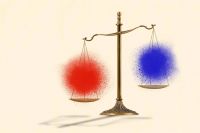The overturning of Roe v. Wade has heightened awareness of some of the broader issues the feminist movement and other allies for women’s rights have long championed, particularly advancing gender equality and economic well-being in societies around the globe.
Stanford scholars have studied some of the difficulties of reaching those goals and the many obstacles women face, whether it is at work, in the classroom and education, or as leaders. They have examined how gendered biases are perpetuated, why gender diversity and inclusion are imperative, and what can lead to prejudiced attitudes, assumptions, and adversities ultimately changing.
From the fields of business, social sciences, the humanities, law, education, health, and medicine, here are what Stanford researchers have to say about the evolution of women’s rights and the obstacles to advancing gender equity.
































